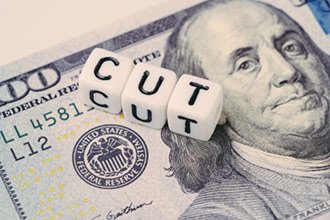Just Released: "Three Ways to 'Immunize' Your Portfolio Against Coronavirus Market Chaos." Get this special report now, for free. Click here...
We've seen this show before. After the stock market hits a rough patch, almost on cue, riding a noble white stallion, comes the U.S. Federal Reserve to save the day with an interest rate cut.
What was unusual about Tuesday's rate cut was that it happened in between regular Fed meetings. It was billed as an "emergency rate cut." The last time we got one of those was during the financial crisis in 2008, after Lehman Brothers collapsed.

The idea is that lower interest rates will overcome coronavirus fears and keep businesses and consumers doing what they are supposed to do. Initially, the stock market jumped on the news, but then it faded in a big way. Apparently, the size of the cut spooked investors, who took it to mean that the Fed knew something we didn't and the economy was in real trouble.
It was exactly the wrong move.
"Lower rates aren't going to get consumers out if they're scared to go out," said Money Morning Capital Wave Strategist Shah Gilani. And they certainly won't fix the health problem we now face.
The real problem is that the Fed has very little left in its war chest to deploy to deal with the next real economic shock that comes along. And down the road, when the coronavirus is behind us, central banks will have to start pulling back the stimulus they intend to flood economies with. Markets know that's the other side of lowering rates to combat a crisis that eventually will pass.
So no, lowering rates isn't going to put a hard-and-fast support under weak markets. Still, pundits expect there's at least a good chance that is just what the Fed will do again in its scheduled meeting later this month.
But you don't need to waste your time wondering what the Fed will do and whether it will help or hurt stocks.
Instead, we'll show you the number to watch to know where the market will move next...
When to Get Bullish Again
[mmpazkzone name="in-story" network="9794" site="307044" id="137008" type="4"]
Of course, nobody knows in advance when the market will bottom, or if it already has bottomed. We certainly will not get that call from the Fed, no matter what it says or does.
Rather, we need to examine the market itself, look under the hood, and determine if the weight of the evidence is behind us. Then we can safely invest.
Just remember, nobody can buy at the bottom either. Those who do got lucky, so it is better to let the market rebuild a rising trend, and then - and only then - do we jump back in.
The first thing to note is where there is support and resistance. These are levels where demand and supply, respectively, generally increase. If support, which is below the market, holds, then we'll know that the sellers had enough selling. And if resistance, which is above the market, is broken to the upside, then we'll know that buyers got bolder. It will become a positive feedback loop, where buyers make money, others want to join, and so on.
Shah pegs the first support at 26,500 on the Dow Jones Industrial Average, with 26,000 and the next level where we can expect some buyers to get more active. The Dow is currently trading around 26,400, so we're looking for it to build support at 26,500 or consolidate at 26,000.
Next, we'll need to distinguish between an oversold bounce, or a "dead cat bounce," and the real bottoming process.
We do that by looking at breadth and volume. Monday's 1,000-point comeback sure looked great on the surface, but it failed to bring a real surge in either breadth or volume. Perhaps three-quarters of stocks actually went up that day, and if they did, it was on merely OK volume.
Sure enough, the Dow fell back again Tuesday after the Fed's announcement. So, was Wednesday's surge the real deal? Breadth and volume were better, but we'll need at least two days in a row where the market gains ground and does it with broad participation by big stocks and small stocks alike.
Will that happen? Again, nobody knows. But what we do know is that if the market can't pull itself up from these deeply oversold conditions, then it's a lot weaker than we thought.
But if it can, then perhaps it knows something about how we will sidestep the worst of the coronavirus and get the economy - and the market - back on track.
You Can Collect $4,238 with This Options Trading Secret
For years, this guy was beating the stock market's top traders.
Trade after trade, he was raking in a ton of money - making it look easy.
He got so good, he started his own financial tech company. Then one of the largest investment firms on the planet offered him $20 million to buy it, along with all of his most valuable trading secrets.
But today, he wants to share with you the one secret they didn't get.
And truth be told, this might be the most lucrative one yet.
What he's invented is so unique - so incredible - it's almost hard to believe.
He's found a way to predict the future buying patterns of nearly any stock on the market.
With this little trick, he can see major Payday Appointments long before they arrive.
It's the reason he was able to collect $4,238 on Netflix, Facebook, Apple, and Amazon all under a minute's time.
And while it may have been a challenge to create this moneymaking "machine," it's super easy to understand and even easier to put into action.
In fact, he's going live from his private office in Florida to show you just how simple this options trading secret really is.


